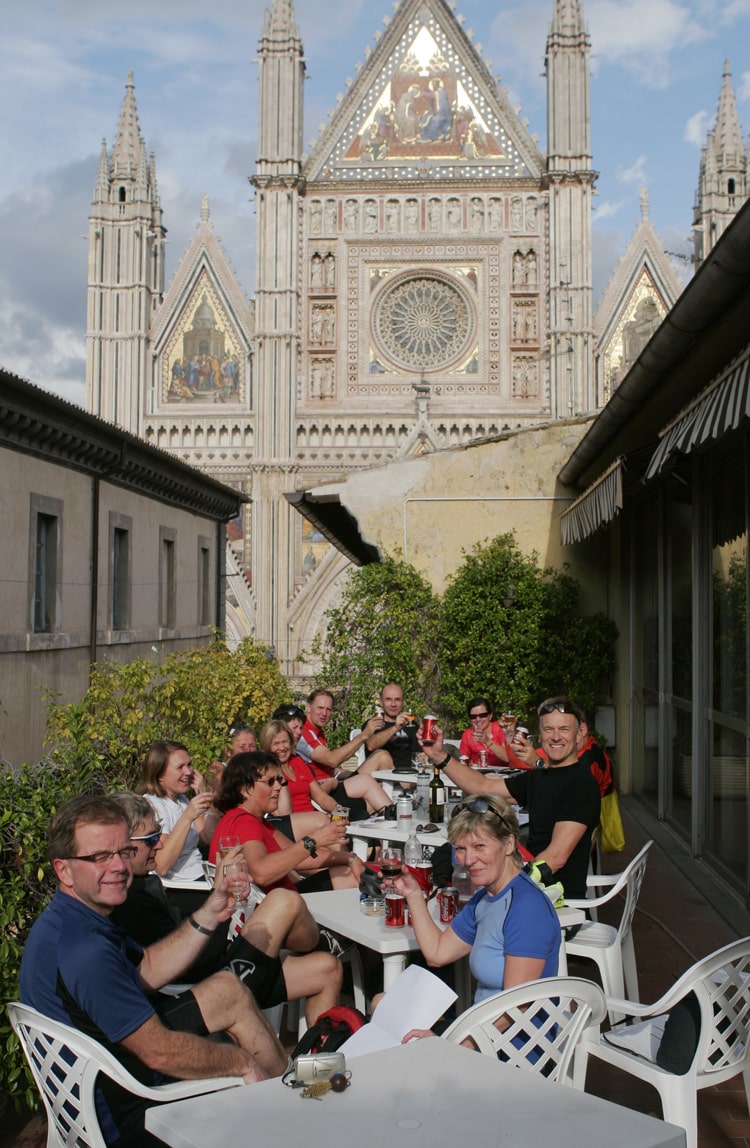Last month I asked Chat GPT to tell you a bit about our first day of cycling on our Umbria bike tour.
My turn now, and I want to tell you a bit about Orvieto. We arrive in Orvieto at the end of our second day of cycling, ie Monday afternoon. It is an incredible sight.
Anyone who already knows Orvieto will be nodding along in agreement, but also thinking ‘Hold on, isn’t that the place built on the top of an ancient volcano, at the top of a bloody great hill?’ Yes, that’s the place, let’s park the hill for a minute – we’ll come back to it.
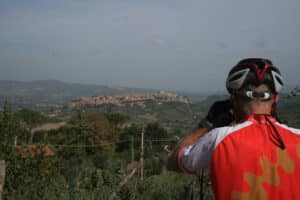
There’s a ‘wow’ moment as we cycle towards Orvieto. We cycle out of the Maremma, through Acquapendente, past the Lago di Balsano, and then we get our first sight of Orvieto.
Here are two photos of me and Bill Moser, both taken from the exact same place
(please click to enlarge, or you won’t know what I’m talking about). 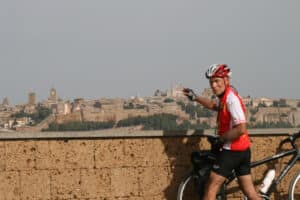
Orvieto is built on top of a 300 metre high volcanic plateau (that’s 1,000 feet for our British and American friends). Often, where you find towns or villages at the top of a cliff, there’s a back way. Beynac is a good example, in Dordogne. The chateau sits 150 metres above the river Dordogne on its spectacular cliff top, but if you arrive from the North, it’s flat! There ain’t no cliff. The same is true of Rocamadour.
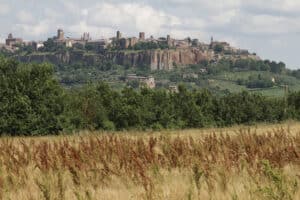
So however you approach Orvieto, it’s amazing.
Around the beginning of the Roman Empire it was the pre-eminent Etruscan settlement, and still boasts hundreds of excavated Etruscan caverns and tunnels. It’s easy to forget that ‘Rome’ didn’t start off occupying the whole of Italy, it was just Rome! It’s early battles were against other Italians, and one of the most significant and brutal campaigns was the war against a coalition of Samnites, Etruscans, and Umbrians which culminated in the Battle of Sentinum in 295 BC.
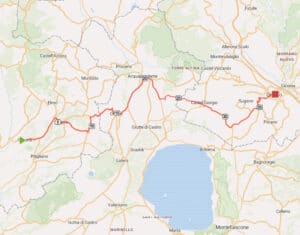
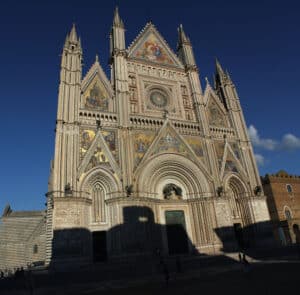
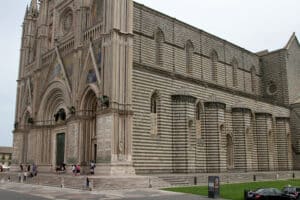
Over time Orvieto became a popular retreat for Cardinals and Popes because of its tranquility and safety, compared to the frequent unrest in Rome. One key example was in 1527, during the sacking of Rome by the Holy Roman Empire, when Pope Clement VII retreated to Orvieto. He inspired the construction of a a spectacular well, St Patrick’s Well, more than 50 metres deep. We’ll take a stroll down the well on Tuesday morning – get the thighs warmed up.
I did promise to come back to the hill. There are 3 ways to get to the top of Orvieto, where we’ll be staying. There’s a direct road up – hello Doug DeJonge, I still remember your grace when we raced up this hill, in our Team Italy cycling jerseys, and when we got towards the city gate where our mates were waiting, you slowed right down so that everyone thought I was just behind you. We know it wasn’t true!
There’s a longer way up, a less-steep road that winds more gently 4Km to the top.
But much more importantly, there’s a funicular railway that takes bikes! So there’s a way up for everybody, no excuses.
The history of Orvieto is pretty amazing, but to be honest the reasons I love it are the truly spectacular views as you approach, and the beautiful piazza with its very special Duomo. What a place. The trouble is, it’s hard to deliver an ‘Orvieto’ every day, there’s only one of it. 